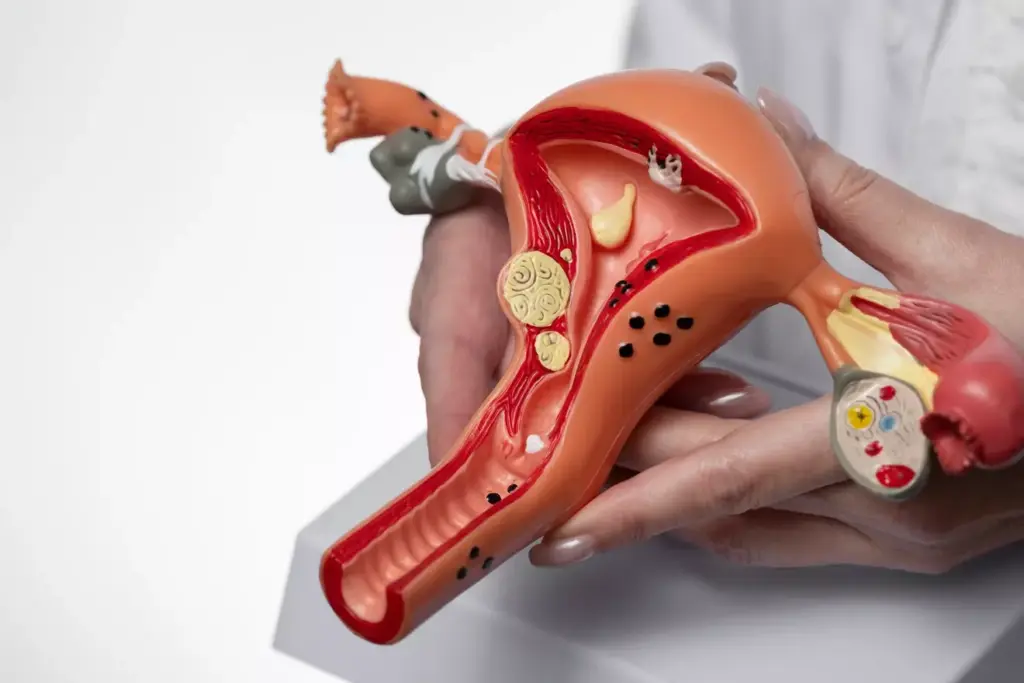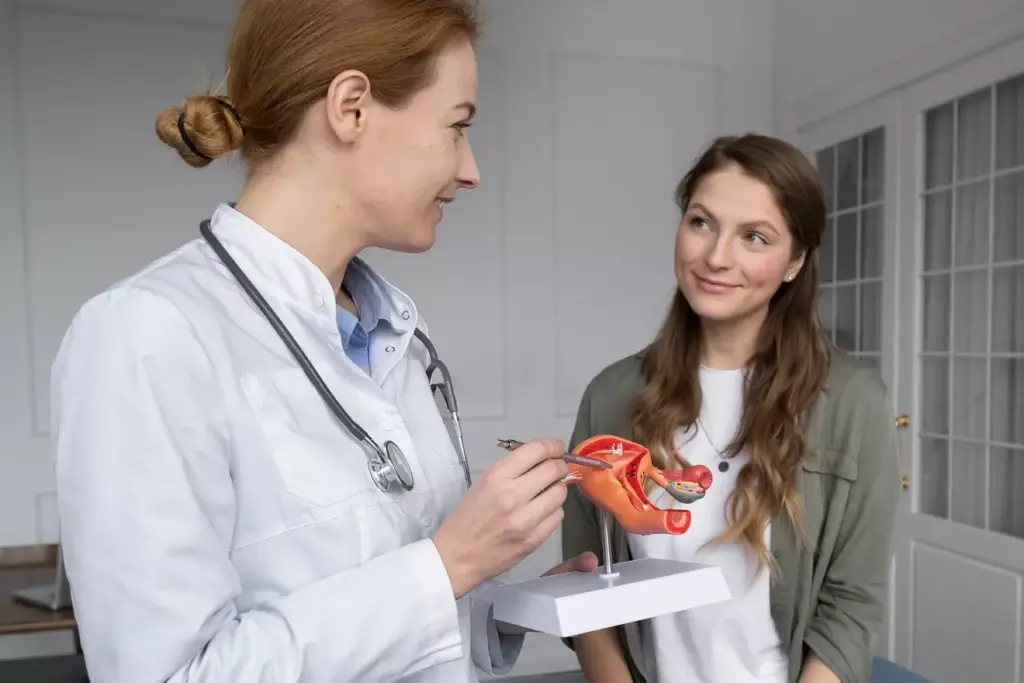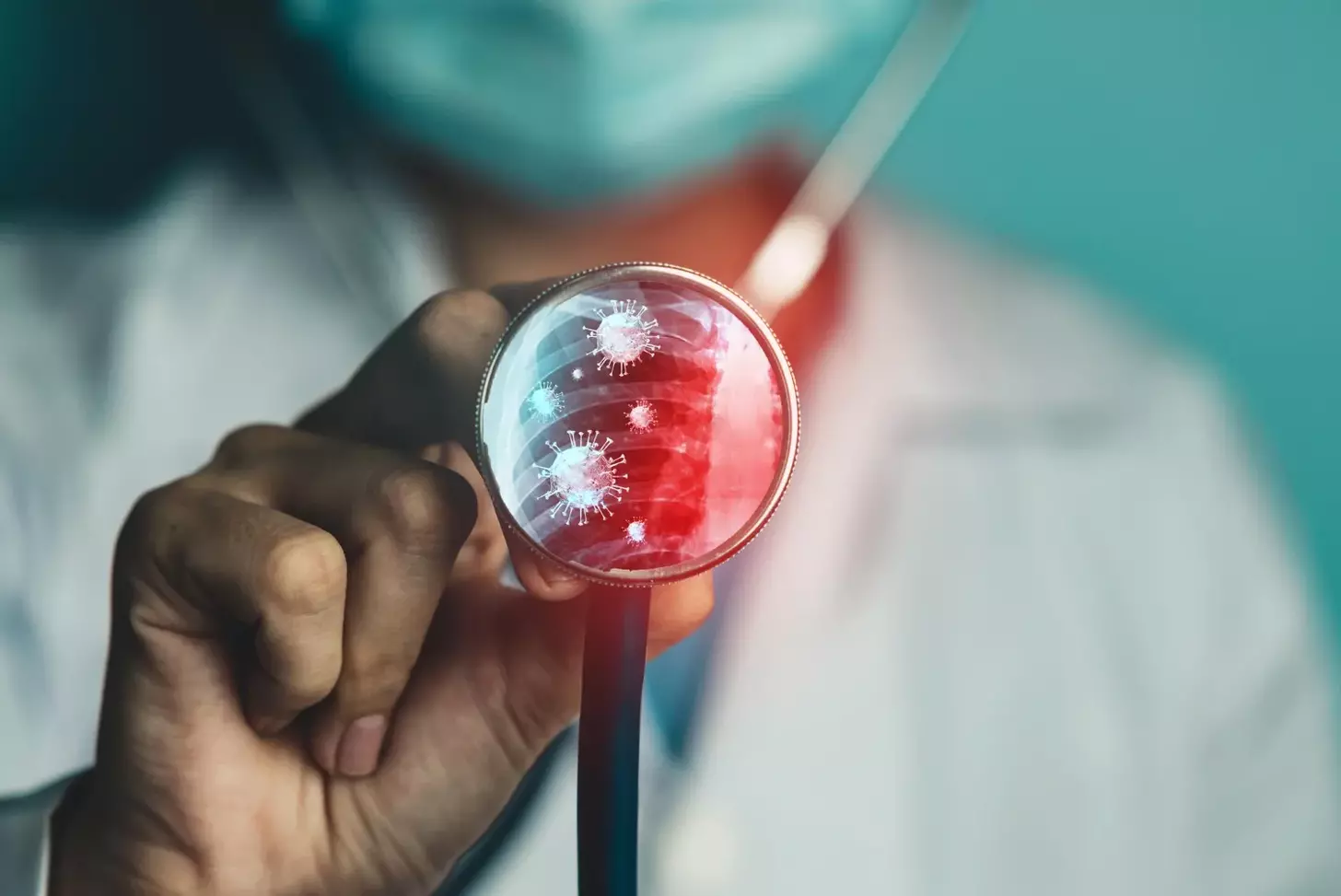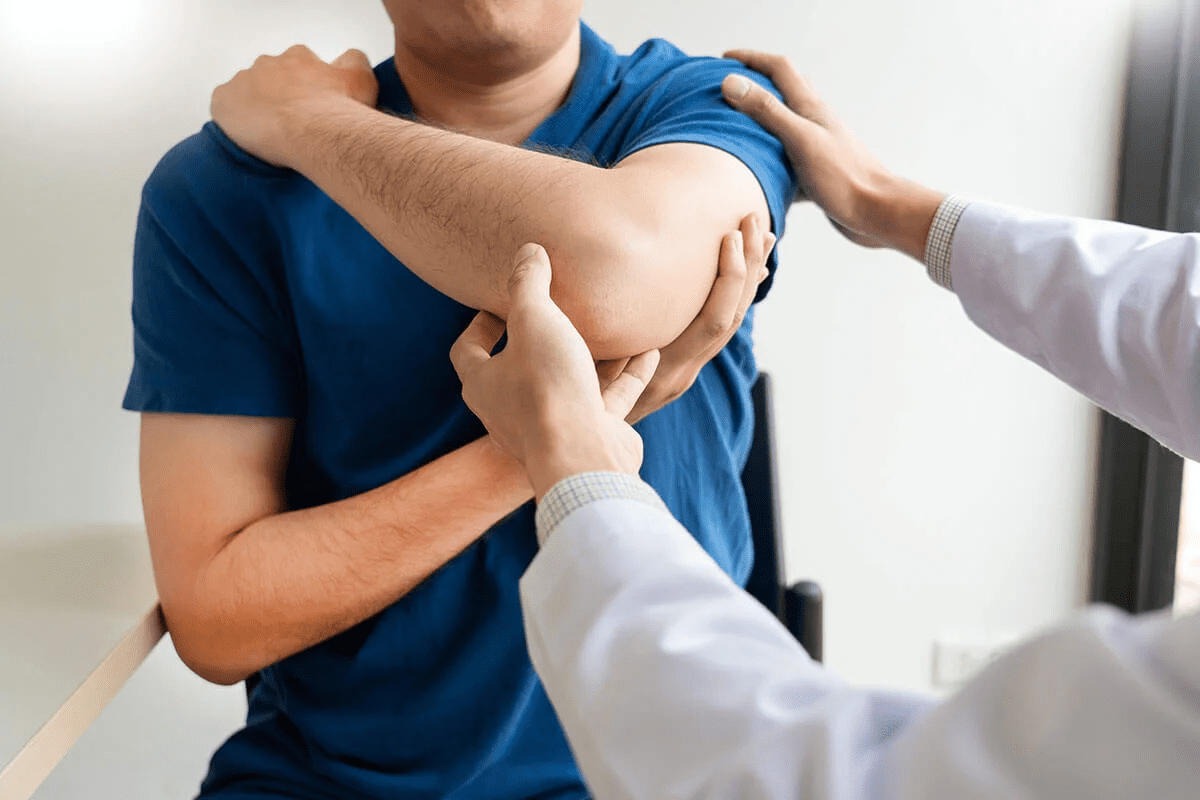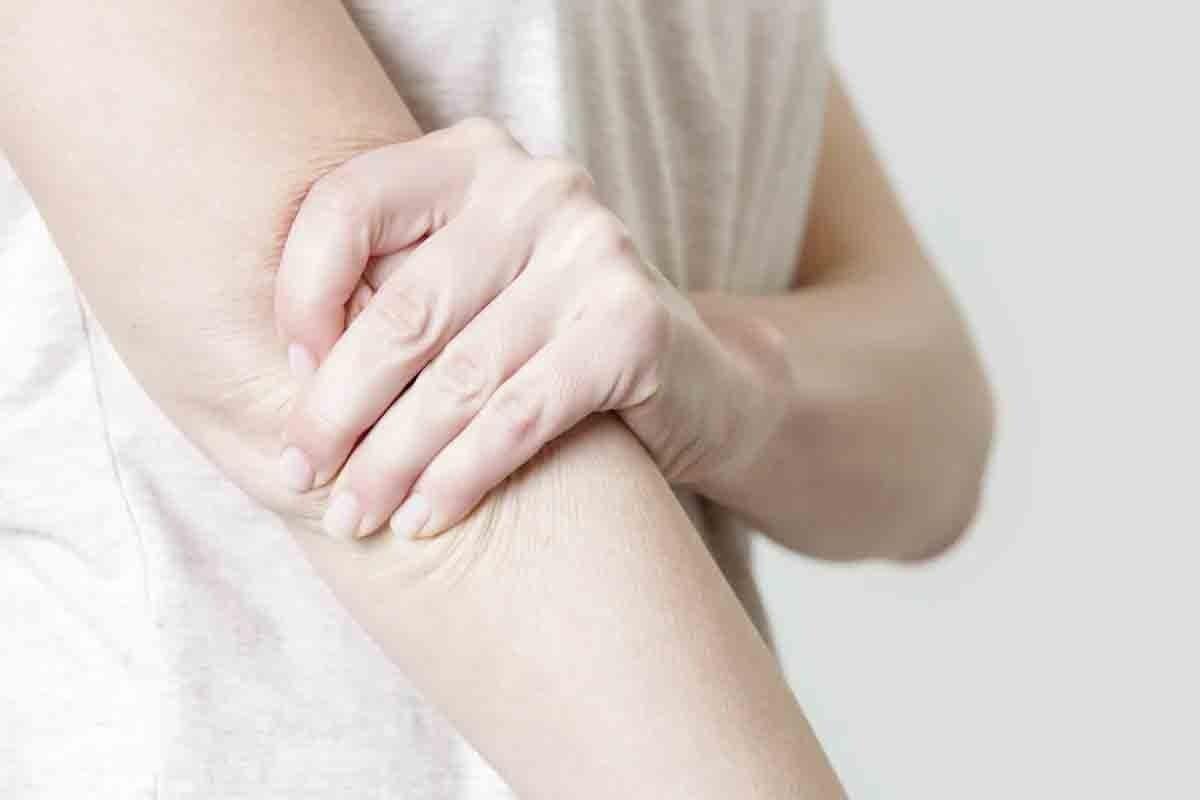Last Updated on November 27, 2025 by Bilal Hasdemir

For those with bladder cancer, BCG immunotherapy brings new hope. BCG, or Bacillus Calmette-Guérin, uses the body’s immune system to fight cancer in the bladder. At Liv Hospital, we focus on our patients, providing top-notch bladder cancer treatment with BCG. We guide each step with care and compassion.
BCG treatment involves putting a weakened TB bacterium into the bladder. This helps the immune system attack cancer cells. It’s the best way to manage non-muscle-invasive bladder cancer. Scientists are also working to make BCG therapy better, including finding new ways to predict cancer return after BCG therapy.
Key Takeaways
- BCG therapy is a form of immunotherapy used to treat non-muscle-invasive bladder cancer.
- It involves instilling a weakened form of the TB bacterium directly into the bladder.
- The goal of BCG treatment is to stimulate the immune system to fight cancer cells.
- BCG is considered the gold standard for managing non-muscle-invasive bladder cancer.
- Ongoing research aims to improve BCG therapy and predict cancer recurrence.
Understanding Non-Muscle-Invasive Bladder Cancer
Non-muscle-invasive bladder cancer is a condition where cancer cells are in the bladder lining but haven’t reached the muscle layer. It’s a key area of study for effective management. We’ll look at the different types and stages of bladder cancer, focusing on non-muscle-invasive. We’ll also talk about how risk stratification helps find the best treatment.
Types and Stages of Bladder Cancer
Bladder cancer is divided into non-muscle-invasive and muscle-invasive types. Non-muscle-invasive bladder cancer (NMIBC) makes up about 75% of new cases. NMIBC is further split into stages like Ta, T1, and carcinoma in situ (CIS), based on how deep the cancer is in the bladder wall.
Knowing these stages is key for figuring out the prognosis and treatment. For example, Ta tumors are in the innermost layer of the bladder. T1 tumors have invaded the tissue beneath the bladder lining but not the muscle. CIS is a flat, high-grade cancer that hasn’t invaded the bladder wall but has a high chance of growing.
Risk Stratification in Bladder Cancer
Risk stratification is vital in managing non-muscle-invasive bladder cancer. It’s about figuring out the chance of cancer coming back or becoming muscle-invasive. Factors like tumor stage, grade, size, number, and CIS presence are looked at. Recent studies have found certain markers in blood and urine that can predict cancer coming back after BCG therapy.
By grouping patients into low, intermediate, and high-risk, doctors can create treatment plans that fit each person’s risk. For instance, high-risk patients might get more aggressive treatments like BCG therapy to lower the chance of cancer coming back or growing.
What Is BCG Treatment for Bladder Cancer?
BCG treatment for bladder cancer is a big step forward in immunotherapy. BCG, or Bacillus Calmette-Guérin, has been treating non-muscle-invasive bladder cancer for decades. It’s a form of immunotherapy.
Definition and Origin of Bacillus Calmette-Guérin
BCG comes from a weakened Mycobacterium bovis. This is close to the bacteria that cause tuberculosis. It was first made as a tuberculosis vaccine. Now, it’s used to treat bladder cancer by boosting the immune system.
BCG treatment involves putting the live, weakened bacteria into the bladder. This action starts an immune response to fight cancer cells.
The BCG Drug Composition
The BCG drug is made of live, weakened Mycobacterium bovis bacteria. When put in the bladder, it sparks an immune reaction. The makeup of the BCG drug is key to its success as an immunotherapy.
The BCG strain used can change, but the goal stays the same. It’s to get the immune system to attack bladder cancer cells.
| Component | Description | Function |
|---|---|---|
| Live, attenuated bacteria | Mycobacterium bovis | Stimulates immune response |
| Immunotherapy agent | BCG vaccine | Treats non-muscle-invasive bladder cancer |
How BCG Works as an Immunotherapy
BCG immunotherapy is a key treatment for bladder cancer. It uses the body’s immune system to fight cancer. Unlike traditional treatments, BCG boosts the immune system to attack bladder cancer cells.
The Immune Response Mechanism
The BCG vaccine starts an immune response in the bladder. When BCG is put into the bladder, it’s seen as a foreign body. This triggers an immune reaction, activating cells to destroy cancer cells.
This immune action not only kills cancer cells but also watches for new ones.
Difference Between Immunotherapy and Chemotherapy
Immunotherapy and chemotherapy treat cancer but in different ways. Chemotherapy kills cancer cells directly. Immunotherapy, like BCG, makes the body’s immune system fight cancer. This makes immunotherapy a more targeted treatment with fewer side effects than chemotherapy.
| Treatment Aspect | Immunotherapy (BCG) | Chemotherapy |
|---|---|---|
| Mechanism of Action | Stimulates immune system to fight cancer | Directly kills rapidly dividing cancer cells |
| Target Specificity | Targets cancer cells through immune response | Targets all rapidly dividing cells, including healthy ones |
| Side Effects | Generally fewer side effects due to localized action | Can have significant side effects due to systemic action |
In summary, BCG immunotherapy is a special way to treat bladder cancer. It uses the immune system to fight cancer. Knowing how BCG works and its differences from chemotherapy helps patients choose the best treatment.
Patient Eligibility for BCG Treatment
Not all patients are right for BCG treatment. It’s key to know who can get it. BCG is mainly for those with high-risk non-muscle-invasive bladder cancer (NMIBC).
Ideal Candidates for BCG Therapy
We look for the best candidates for BCG therapy. Patients with high-grade NMIBC are top picks because they’re at high risk. Also, those who had cancer come back after treatment might benefit from BCG.
Choosing BCG depends on the tumor’s grade, stage, and if it’s in situ. We also think about the patient’s health, past treatments, and any issues that might stop them from getting BCG.
Contraindications and Precautions
BCG is good for many, but there are some who shouldn’t get it. Patients with weakened immune systems, like those with HIV/AIDS or on immunosuppressants, are at risk of BCG infection.
Other things that might stop someone from getting BCG include:
- Active tuberculosis
- Severe hematuria
- Urinary tract infections
- Recent traumatic catheterization
We’re also careful with those who had BCG problems before or might have trouble with urine flow. Choosing the right patients and watching them closely helps make BCG safer and more effective.
By carefully picking who gets BCG and watching out for risks, we can make BCG treatment better for patients with non-muscle-invasive bladder cancer.
The BCG Procedure: Step-by-Step Process
Learning about the BCG procedure can ease anxiety for those facing bladder cancer treatment. It includes several steps, from getting ready to aftercare.
Pre-Treatment Preparation
Before starting, patients prepare to make sure the treatment works well and is safe. Telling your doctor about any medicines you take is very important. You might need to stop taking some before the treatment.
Patients are also told to:
- Empty their bladder before the procedure
- Avoid foods or drinks that could upset the bladder
- Tell their doctor about any bladder infections or health problems
A well-known urologist, says, “Getting ready right is key for a good BCG treatment. Patients need to know what to expect and what to avoid.”
“The more prepared the patient is, the smoother the treatment process will be.”
The Intravesical Instillation Process
The BCG treatment puts the BCG solution directly into the bladder through a catheter. This is called intravesical instillation. The procedure happens in a doctor’s office or clinic and takes 15 to 30 minutes.
During the treatment, the patient lies on their back. A lubricated catheter is carefully put into the bladder through the urethra. Then, the BCG solution is slowly added to the bladder.
After that, the catheter is taken out. The patient is asked to keep the solution in their bladder for about two hours before they can urinate.
Post-Treatment Care and Precautions
After the treatment, patients get advice on how to take care of themselves to avoid side effects. It’s very important to follow the instructions from your healthcare team. Some tips include:
- Drinking lots of fluids to help clean out the bladder
- Avoiding hard activities for a day or two
- Watching for side effects like needing to urinate a lot or feeling uncomfortable, and telling your doctor if they don’t go away
By knowing and following these steps, patients can better handle the BCG treatment. This helps them have the best chance of success.
BCG Treatment Protocols and Schedules
The BCG treatment aims to be effective while keeping side effects low. It starts with an induction phase and then maintenance therapy. We’ll cover the typical BCG treatment plans and schedules. We’ll also talk about the importance of follow-up visits.
Induction Therapy
Induction therapy is the first step in BCG treatment. It involves weekly BCG treatments in the bladder for six weeks. This phase is key for starting the body’s fight against bladder cancer. Patients are watched closely for any bad reactions or side effects during this time.
Key aspects of induction therapy include:
- Once-weekly BCG instillations for six weeks
- Close monitoring for side effects
- Assessment of patient response to therapy
Maintenance Therapy
Maintenance therapy comes after the induction phase. It keeps the immune system fighting cancer and stops it from coming back. BCG treatments are given at 3, 6, 12, 18, 24, 30, and 36 months after the first treatments. The exact schedule might change based on how well the patient responds and their risk level.
Maintenance therapy is key for:
- Keeping the immune system fighting bladder cancer
- Lowering the chance of cancer coming back
- Watching for late side effects or problems
Treatment Duration and Follow-up
BCG therapy can last up to three years, including both the induction and maintenance phases. Regular check-ups are vital. They help see how well the treatment is working, manage side effects, and make any needed changes. Cystoscopy and urine tests are often used to check for cancer signs during these visits.
Follow-up care includes:
- Regular cystoscopy examinations
- Urine cytology tests
- Checking patient symptoms and side effects
Effectiveness and Success Rates of BCG Therapy
Studies show BCG therapy cuts bladder cancer recurrence rates in high-risk patients. It’s a key treatment for non-muscle-invasive bladder cancer, helping patients worldwide.
Clinical Outcomes and Statistics
Clinical trials and real-world studies prove BCG therapy’s worth. It lowers the risk of bladder cancer coming back and getting worse. The success rates of BCG treatment are high, showing big benefits for high-risk patients.
- Reduces recurrence rates by up to 70-80%
- Delays or prevents disease progression
- Improves overall survival rates
A meta-analysis of several clinical trials showed BCG therapy’s benefits. It significantly lowers recurrence risk compared to intravesical chemotherapy. This highlights the effectiveness of BCG therapy as a first-line treatment for high-risk non-muscle-invasive bladder cancer.
Factors Affecting Treatment Success
While BCG therapy is very successful, several factors can affect its success. These include:
- Patient selection: Ideal candidates for BCG therapy are those with high-risk non-muscle-invasive bladder cancer.
- Treatment adherence: Completing the full induction and maintenance courses of BCG therapy is key for the best results.
- Tumor characteristics: Factors such as tumor stage, grade, and multifocality can impact how well BCG therapy works.
A well-known urologic oncologist, said, “BCG therapy’s success depends on patient selection and treatment adherence. Improving these can greatly enhance outcomes for patients with high-risk bladder cancer.”
By understanding these factors and improving treatment protocols, we can boost the success rates of BCG treatment. This will help improve patient outcomes.
Managing Side Effects and Complications
BCG treatment is usually well-tolerated, but it can have side effects and complications. It’s important to know about these issues and how to handle them. This helps patients get the most out of their treatment.
Common Side Effects
Side effects of BCG include needing to urinate often, feeling urgent, and discomfort. These symptoms are usually mild and can be managed. Drinking plenty of water and avoiding caffeine and spicy foods can help.
- Urinary Frequency: Patients may need to urinate more than usual.
- Urgency: They might feel a sudden, intense need to urinate.
- Discomfort: Pain or burning while urinating can occur.
It’s key for patients to tell their healthcare provider about any symptoms. This ensures they get the right care.
Serious Complications
Though rare, serious complications can happen with BCG treatment. These include BCG infection or sepsis, which need quick medical attention. Signs of serious issues include:
- High Fever: A fever over 103°F (39.4°C).
- Severe Fatigue: Feeling unusually tired or weak.
- Persistent Pain: Severe pain that doesn’t get better with usual treatments.
If patients see these symptoms, they should get medical help right away.
Strategies for Side Effect Management
Managing side effects well is key to keeping patients on their BCG treatment plan. Here are some strategies:
- Supportive Care: Using over-the-counter pain relievers and anti-inflammatory drugs can help with discomfort.
- Lifestyle Adjustments: Avoiding irritants and drinking plenty of water can ease urinary symptoms.
- Medical Intervention: If side effects are severe, doctors might change the treatment plan or give extra medications.
By working with their healthcare team, patients can reduce side effects and get the most from BCG therapy.
BCG Shortages and Alternative Treatment Options
BCG shortages have become a big problem, leading to a search for new treatments for bladder cancer. These shortages have changed how doctors treat the disease all over the world. Now, we need to look at all the options we have.
Global BCG Supply Issues
The Bacillus Calmette-Guérin (BCG) vaccine is key in treating non-muscle-invasive bladder cancer. But, recent shortages have shown us how fragile its supply chain is. Problems with making it, more people needing it, and issues with getting it to where it’s needed have caused these shortages.
These shortages are hurting how we care for patients and the results we get. So, finding new treatments that work as well or better is very important.
Alternative Therapies When BCG Is Unavailable
When BCG is not available, we look at other treatments. Some of these include:
- Intravesical chemotherapy: Putting chemotherapy directly into the bladder.
- Device-assisted therapies: Using devices to help deliver treatments better.
- Immunotherapies: Treatments that help the body fight cancer on its own.
These options could be good when BCG is not an option. They might even offer better results or benefits.
Emerging Treatment Approaches
New ways to treat bladder cancer are being developed. Some of these include:
- Oncolytic virus therapy: Viruses that target and kill cancer cells.
- Antibody-drug conjugates: Drugs that target cancer cells with the help of antibodies.
- Gene therapy: Changing genes to fight or prevent cancer.
We are watching these new methods closely. They could bring new hope to patients with bladder cancer, even with BCG shortages.
Dealing with BCG shortages means we need to try different approaches. By looking at new treatments, we can make sure patients get the best care.
Conclusion: The Future of BCG in Bladder Cancer Management
BCG is a key part of treating non-muscle-invasive bladder cancer, even with challenges like shortages. Researchers are working hard to make BCG therapy better and find new treatments. This is to help when BCG isn’t enough.
The outlook for BCG in treating bladder cancer is good. Studies are underway to make BCG work better and have fewer side effects. As we go forward, BCG’s role in treating bladder cancer will likely change. It will include new technologies and ways to treat the disease.
We are dedicated to sharing the latest in BCG therapy and other treatments for bladder cancer. Knowing where BCG stands now and where it’s headed helps us support patients. It lets them make informed choices about their care.
What is BCG treatment for bladder cancer?
BCG (Bacillus Calmette-Guérin) treatment is a way to fight non-muscle-invasive bladder cancer. It uses a weakened tuberculosis bacteria in the bladder. This helps the immune system attack cancer cells.
How does BCG treatment work as an immunotherapy?
BCG treatment starts an immune response in the bladder. This response helps destroy cancer cells. The BCG bacteria make immune cells that target and remove cancer cells.
What is the difference between BCG immunotherapy and chemotherapy?
BCG immunotherapy boosts the immune system to fight cancer. It’s different from chemotherapy, which directly kills cancer cells. BCG can be more effective and have fewer side effects for some.
Who is eligible for BCG treatment?
People with non-muscle-invasive bladder cancer can get BCG treatment. It’s best for those with high-risk or intermediate-risk cancer, based on risk levels.
What are the common side effects of BCG treatment?
Side effects of BCG treatment include frequent urination, urgency, and discomfort. You might also feel flu-like. These effects are usually mild and short-lived, but can be managed.
What are the serious complications associated with BCG treatment?
Rare but serious complications include severe infections like sepsis and BCGosis. These are more likely in people with weakened immune systems.
How is BCG treatment administered?
BCG treatment is given through a catheter into the bladder. Patients get a series of treatments, with the schedule based on their treatment plan.
What is the typical BCG treatment protocol?
The usual BCG treatment starts with weekly treatments for 6 weeks. Then, there’s maintenance therapy with more treatments at set intervals.
How effective is BCG therapy in treating bladder cancer?
BCG therapy is very effective against non-muscle-invasive bladder cancer. It greatly reduces cancer coming back or getting worse. It improves patient outcomes and quality of life.
What happens when BCG is not available due to shortages?
If BCG is not available, other treatments like immunotherapy or chemotherapy might be used. New treatments, including immunotherapies and targeted therapies, offer hope for bladder cancer patients.
Is BCG considered chemotherapy?
No, BCG is not chemotherapy. It’s an immunotherapy that boosts the immune system to fight cancer, unlike chemotherapy which directly kills cancer cells.
What is the role of risk stratification in bladder cancer treatment?
Risk stratification is key in choosing the right treatment for bladder cancer patients. It helps decide the best treatment, including BCG therapy, based on cancer risk.
Can BCG treatment be used in combination with other therapies?
Yes, BCG treatment can be combined with other therapies like surgery or other immunotherapies. This can improve treatment results and patient care.
References
- Redelman‑Sidi G, Glickman MS, Bochner BH. The mechanism of action of BCG therapy for bladder cancer — a current perspective. Nat Rev Urol. 2014;11(3):153–162. doi:10.1038/nrurol.2014.15 (Nature)
- Pettenati C, Ingersoll MA, et al. Mechanisms of BCG immunotherapy and its outlook for bladder cancer. Nat Rev Urol. 2018 Oct;15(10):615–625. doi:10.1038/s41585-018-0055-4 (PubMed)
- Jiang S, et al. BCG in Bladder Cancer Immunotherapy. PMC. 2022. https://pmc.ncbi.nlm.nih.gov/articles/PMC9264881/ (PMC)
- Macmillan Cancer Support. BCG treatment for bladder cancer. https://www.macmillan.org.uk/cancer-information-and-support/treatments-and-drugs/bcg-treatment-for-bladder-cancer
- Redelman‑Sidi G, Glickman MS, Bochner BH. The mechanism of action of BCG therapy for bladder cancer — a current perspective. PubMed (Nat Rev Urol, 2014). PMID: 24492433. https://pubmed.ncbi.nlm.nih.gov/24492433/ (PubMed)


